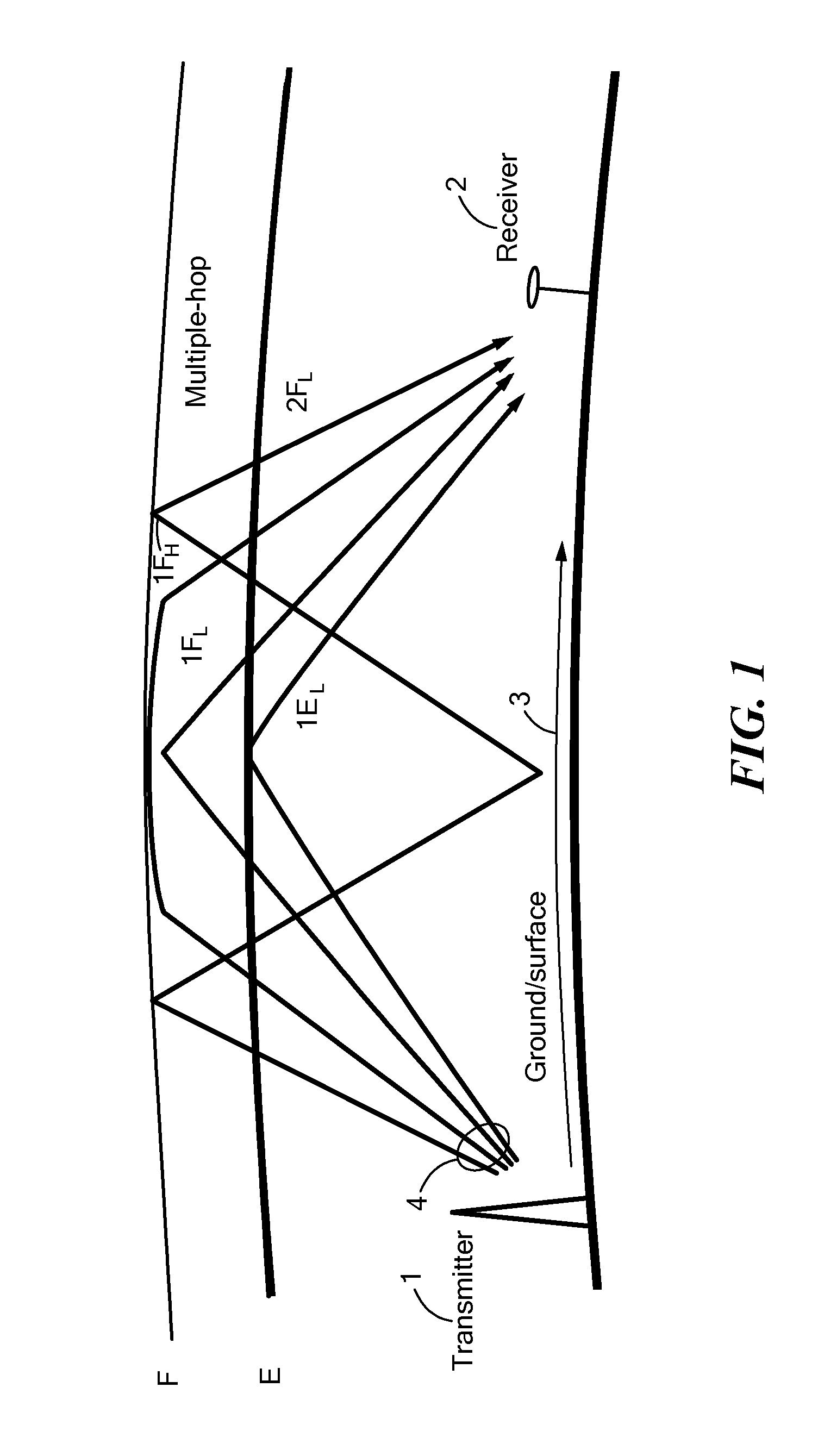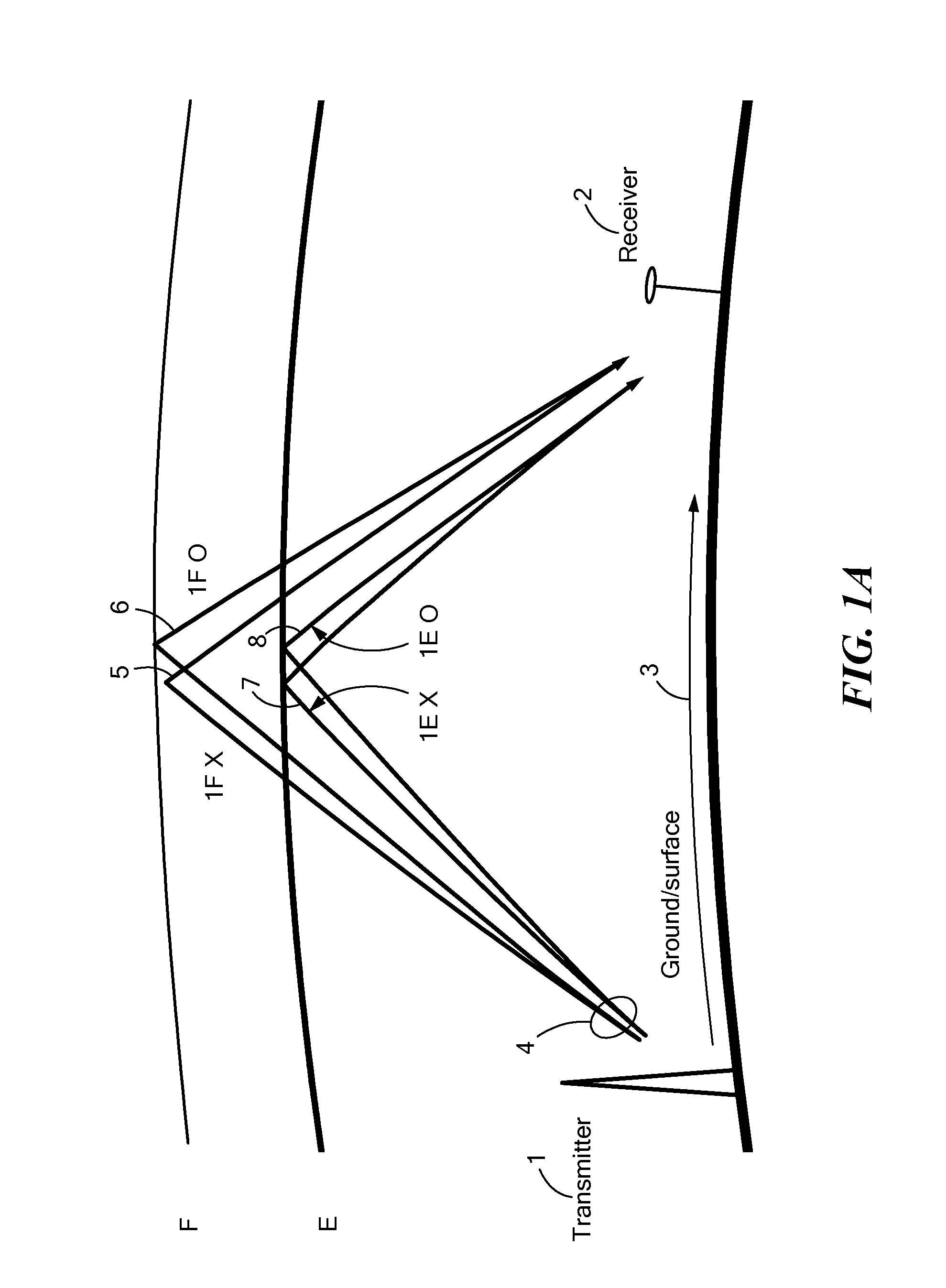Accurate timing distribution by high-frequency radio
a timing distribution and high-frequency radio technology, applied in the direction of direction finders, scatter propogation systems, instruments, etc., can solve the problems of unreliable hf radio transmission, unstable clocks and portable reference clock signals, and never quite accurate enough to be used in precise timing applications. to achieve the effect of more accurate timing
- Summary
- Abstract
- Description
- Claims
- Application Information
AI Technical Summary
Benefits of technology
Problems solved by technology
Method used
Image
Examples
first embodiment
[0043]Referring to FIG. 2A, a flow chart illustrating an example method for determining an absolute time reference according to the first approach described above in conjunction with FIG. 2 is shown. In particular, a transmitter (e.g. a transmitter at NIST) transmits sounding signals and time and frequency reference signals 10 in close time proximity. The time proximity should, for example, occur more rapidly than the changes. However, in certain (unusual) circumstances within several minutes would generally be sufficient. As is known, sounding signals are coded signals conventionally employed for testing and assessing the reception quality of one or more intended receivers and for determining the structure of the ionosphere. Sounding signals, in the present embodiment, are also sent for the purpose of characterizing the propagation delay of the time and frequency reference signals. These sounding signals can, for example, be sent and received on a plurality of different frequencies...
second embodiment
[0046]According to the first approach, the transmitted sounding signals and time and frequency reference signals 10 are augmented to include space weather information in the form of an ionospheric model that is local to a particular NIST station (for example, WWV). Through knowledge of the ionospheric model, an absolute delay can be established from the transmitter to the receiver, thereby improving the accuracy of timing information distributed from NIST. This information can then be processed and expressed as an absolute delay from the transmitter to the receiver. With the absolute delay, the timing and frequency information transmitted by WWV can be used at the receiver to compensate the timing to form an absolute time reference 70. An ionospheric model may be determined through various ionosphere parameterizations. For example, the ionosphere may be characterized through ionosphere layer heights and thickness.
[0047]In another embodiment, information from both space weather infor...
PUM
 Login to View More
Login to View More Abstract
Description
Claims
Application Information
 Login to View More
Login to View More - R&D
- Intellectual Property
- Life Sciences
- Materials
- Tech Scout
- Unparalleled Data Quality
- Higher Quality Content
- 60% Fewer Hallucinations
Browse by: Latest US Patents, China's latest patents, Technical Efficacy Thesaurus, Application Domain, Technology Topic, Popular Technical Reports.
© 2025 PatSnap. All rights reserved.Legal|Privacy policy|Modern Slavery Act Transparency Statement|Sitemap|About US| Contact US: help@patsnap.com



